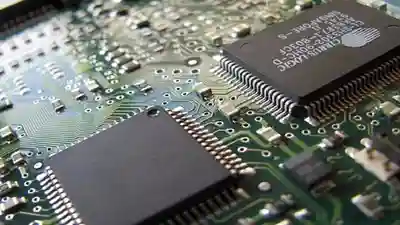India's bold initiative to increase domestic electronics production has witnessed a thumping response from India's micro, small, and medium enterprises (MSMEs). In a mere 15 days since opening registration for the ₹23,000-crore Electronics Component Manufacturing Scheme (ECMS), MSMEs have provided an astonishing 80% of the 70 bids submitted, reflecting their increasing contribution to the country's high-tech ecosystem.
Strong MSME Participation
-
80% of the 70 applications received within 15 days alone come from MSMEs, highlighting their growing ability and interest in electronics production.
-
Though bigger names such as Tata Electronics, Dixon Technologies, and Foxconn are also interested, the vast majority are medium and small enterprises.
Scheme Objectives and Scope
-
The ECMS has a gross outlay of ₹23,000 crore with ₹21,093 crore for sub-assemblies (such as camera modules, multi-layer PCBs, flexible PCBs) and ₹1,712 crore for electronics manufacturing components and capital goods.
-
The scheme aims to fill a foreseen demand-supply gap in electronic components, which is estimated to be as much as $248 billion by 2030 if not met.
Application Categories and Timeline
Components are divided into four groups (A, B, C, D), with the window period for application of A, B, and C three months from May 1, and for D two years.
-
Category A: Display and camera module sub-assemblies
-
Category B: Bare components such as non-SMD, multi-layered PCBs, lithium-ion cells, enclosures
-
Category C: Flexible PCBs, SMD passive components
-
Category D: Components and capital goods utilized in manufacturing
Incentives and Evaluation
-
The scheme provides turnover-linked and capital expenditure-linked incentives, with generation of employment as a mandatory condition for all the applicants.
-
Attention is given to local design competence and quality requirements to promote innovation and world competitiveness.
Sectoral Impact and Growth
The ECMS would be responsible for triggering investments of ₹59,350 crore, generation of more than 91,000 direct jobs, and generating production value of ₹4,56,500 crore over six years.
India's electronics output has already crossed ₹11 lakh crore every year, with $300 billion by 2026 and $500 billion by 2030-31 being the planned targets.
The initiative is part of the overall government initiative to go deep into the electronics manufacturing ecosystem from finished products to the production of crucial components.
Conclusion
The record response of MSMEs to the ECMS marks a revolutionary change in India's electronics industry with small and medium-sized enterprises set to lead innovation, investment, and employment generation. With the government leading the effort towards increased self-reliance and integration into the world economy, the proactive involvement of MSMEs will be instrumental in filling the demand-supply gap and positioning India as a key player in the international electronics value chain.
Sources: Business Standard, Times of India, Economic Times, Press Information Bureau, Beamstart
